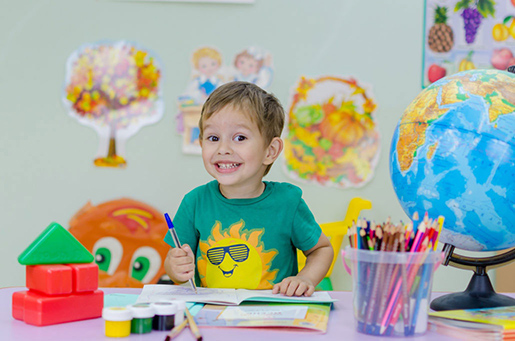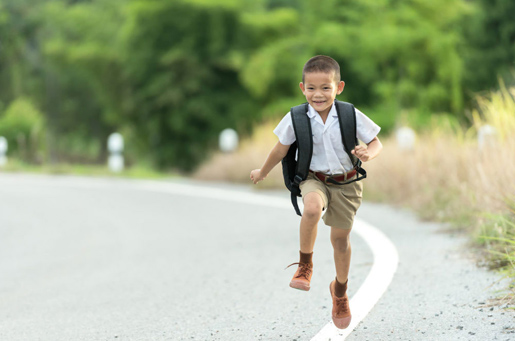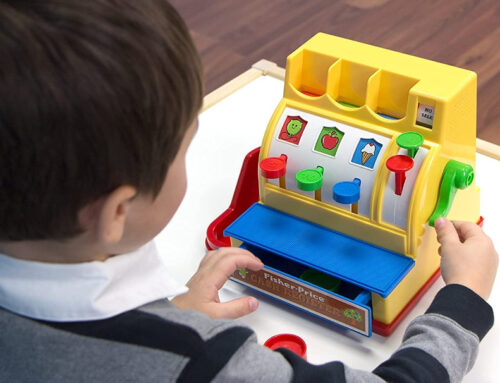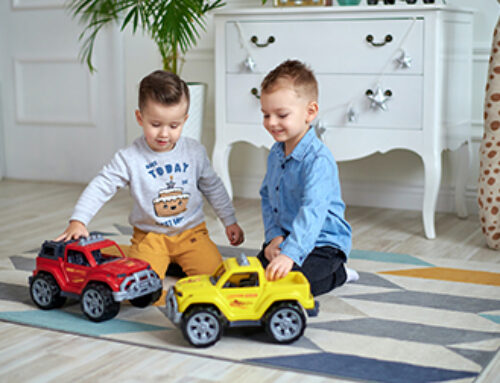For toddlers and preschool children just beginning their school careers, the difference between home and school can seem vast and frightening. Unfamiliar faces, new rules, and new routines can feel overwhelming. You can help ease the transition by following a few simple routines. This blog gives tips to help ease the transition from home to school.
1. Establish a drop off ritual
Drop off can feel difficult for both parents and children alike. Establishing a ritual/routine for drop off can ease the tension of leaving your child at school and manage your child’s anxiety. A drop off ritual is a set of movements/gestures/words that are repeated at drop off every day. For example, the parent may leave and blow two kisses through the window and the child may blow two kisses back. Then the routine is finished. Some parents may give a hug and a high five, then leave. Some parents have also used a repeated phrase or mantra such as “Mommy loves you, misses you, and will see you where? At dinner time!” The repetition gives children both something to look forward to and manages anxiety around leaving.

2. Have a visual pickup schedule so children will know exactly who is getting them from school
Different routines for different days of the week? No problem. Children can learn flexibility if their expectations are managed and they are communicated with clearly. Teaching children to use a calendar through pictures is a great start. Some parents create a calendar and put pictures of the individuals picking the child up from school each day. Perhaps grandparents will pick up the child Tuesdays and Thursdays and the babysitter picks up Mondays, Wednesdays, and Fridays. Create a picture chart and keep it in a common area at your child’s eye level.

3. Communicate with your child’s teacher about what objects from home can be brought into the classroom
Many early learning classrooms encourage parents to bring in family photos so that children can have visual reminders of their families during the day. Some classrooms will also allow children to use a personal stuffed animal or pillow during rest times. These objects can help bridge the gap between home and school by making rest times feel more familiar and comforting.
4. Bring some classroom activities home
Asking your child about his/her favorite activities at school can both help make some classroom routines more familiar and make the home more educational. For example, if your child really enjoys painting, you can involve the whole family in a painting project at the kitchen table by allowing your child to lead the activity and explain how he/she paints at school.

Blue Bird Day fosters socialization, sensory regulation, and pre-academic learning in children ages 2-7 years in therapeutic rotations that simulate preschool and kindergarten settings. Our compassionate therapists practice a relationship-based and family-centered approach, provide parent training, and collaborate on goals and individualized intensive treatment plans for your child.
We believe in a collaborative and multi-disciplinary team approach to therapy. A team of occupational therapists, speech-language pathologists, dietitians, developmental therapists, behavioral therapists, physical therapists, and therapeutic assistants are created for each child to ensure child and family are fully supported and the best possible results are achieved.
Options for individualized, group and virtual therapy sessions are available as well.
Want to learn more or you have a specific question? Feel free to connect with us here!



